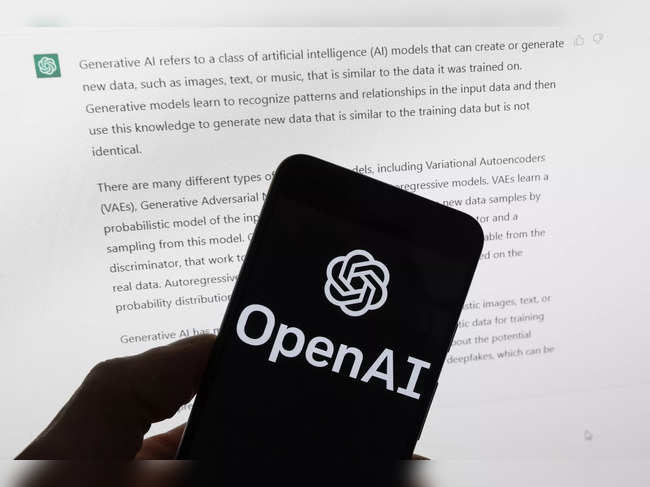Adversarial examples are inputs to machine learning models that have been deliberately crafted to cause the model to make mistakes or produce incorrect outputs. These examples exploit vulnerabilities in the model’s learning process and can pose serious security risks in various applications.
Integrating machine learning algorithms into different domains, such as autonomous vehicles and content filtering systems, has greatly improved their performance. However, recent research has shown that these algorithms are susceptible to adversarial examples—inputs that are carefully generated to mislead the model.
Adversarial examples are crafted by making slight modifications to the input data, which are virtually indistinguishable to the human eye, but can significantly alter the predictions made by the model. These vulnerabilities raise concerns about the reliability and security of machine learning systems. Understanding and defending against adversarial examples is crucial for ensuring the robustness and trustworthiness of machine learning models, particularly in high-stakes applications where the consequences of incorrect predictions can be severe. In this primer, we will delve into the concept of adversarial examples, their implications, and potential defense strategies.

Credit: economictimes.indiatimes.com
Understanding Adversarial Examples
Adversarial examples are a fascinating and concerning aspect of machine learning. These are inputs to a machine learning model that have been slightly modified to cause the model to make mistakes. In other words, these examples exploit weaknesses in the model’s understanding and can be manipulated to produce incorrect or unexpected outputs.
Definition Of Adversarial Examples
- Adversarial examples are inputs intentionally designed to deceive machine learning models.
- They are generated by making slight changes to the original input data.
- Adversarial examples can cause the model to misclassify or produce erroneous outputs.
- These examples exploit vulnerabilities in the model’s decision-making process.
Demonstration Of Real-Life Vulnerabilities
Adversarial examples have been extensively explored and have revealed the vulnerabilities that exist in many machine learning models. Here are some notable demonstrations of real-life vulnerabilities:
- Fooling image recognition: Researchers have successfully crafted adversarial examples that make an image classifier mislabel an elephant as a penguin, or a stop sign as a speed limit sign.
- Manipulating natural language processing: Attackers can generate adversarial examples by adding or changing a few words in a sentence to make it drastically change the model’s sentiment analysis or sentiment polarity output.
- Misleading autonomous vehicles: Adversarial examples can be used to create stickers or patterns that, when placed on road signs or other objects, can trick self-driving car systems into misinterpreting important information.
Adversarial examples not only expose the limitations of machine learning models but also raise broader concerns about their security and reliability. Researchers and developers are actively seeking ways to mitigate these vulnerabilities to ensure the robustness of machine learning systems.
Remember, adversarial examples are not inherently malicious or harmful; they simply exploit the weaknesses present in machine learning models. Understanding these examples is crucial for developing more secure and reliable ai algorithms.
Methods Of Crafting Adversarial Examples
An Overview Of The Techniques Used To Create Adversarial Examples
Adversarial examples are inputs to machine learning models that are intentionally crafted to cause the model to make incorrect predictions or classifications. These examples can be created using various methods, including gradient-based methods, optimization-based methods, and transferability of adversarial examples.
Gradient-Based Methods
- These methods involve computing the gradient of the model’s output with respect to the input and making small perturbations to the input to maximize or minimize the model’s prediction.
- They are often referred to as single-step attack methods as they require only one iteration to generate an adversarial example.
- One popular gradient-based method is the fast gradient sign method (fgsm), where the sign of the gradient is used to determine the direction of perturbation for each input feature.
Optimization-Based Methods
- Unlike gradient-based methods, optimization-based methods aim to find adversarial examples by solving an optimization problem.
- They iteratively update the perturbations on the input to minimize some objective function that encourages misclassification.
- One commonly used optimization-based method is the basic iterative method (bim), which performs several iterations of small perturbations to the input, gradually increasing the magnitude of the perturbations.
Transferability Of Adversarial Examples
- The transferability of adversarial examples refers to the phenomenon where an adversarial example crafted for one model can also fool other similar models.
- This raises concerns about the robustness of machine learning models in real-world scenarios, as an attacker could create a universal adversarial example that can fool multiple models.
- Transferability can occur between models trained on different datasets or even different architectures.
The techniques used to craft adversarial examples include gradient-based methods and optimization-based methods. These methods exploit vulnerabilities in machine learning models to generate inputs that intentionally fool the models. Additionally, the transferability of adversarial examples adds another layer of concern, as these examples can generalize across different models.
Understanding these techniques is crucial for improving the security and reliability of machine learning systems.
Impact Of Adversarial Examples On Machine Learning Systems
The Potential Consequences Of Adversarial Attacks
Adversarial examples, crafted with the intention of fooling machine learning (ml) systems, have the potential to yield severe consequences. Let’s explore the impact of adversarial examples on various aspects of ml systems.
Implications For Image Recognition Systems
Adversarial attacks pose significant challenges for image recognition systems, which are widely employed in various fields. Below are some key points to consider:
- Robustness: Adversarial examples can exploit vulnerabilities in image recognition models, causing misclassifications and reducing the overall robustness of the system.
- Transferability: Adversarial attacks can perturb images in a way that transfers to other ml systems, resulting in consistent misclassifications across different models.
- Evasion: Attackers can manipulate images in a manner imperceptible to the human eye, deceiving image recognition systems and leading to incorrect classifications.
- Training data integrity: Adversarial examples can potentially compromise the integrity of the training data, as models may inadvertently learn from these manipulated or poisoned inputs.
Dangers Of Adversarial Attacks In Real-World Applications
Adversarial attacks extend beyond the realm of academic experiments and can have real-world implications. Here are a few important considerations:
- Security threats: Adversarial attacks can be leveraged as a means of exploiting vulnerabilities in ml systems, potentially causing security breaches.
- Autonomous vehicles: The safety of autonomous vehicles heavily relies on ml algorithms for object recognition. Adversarial attacks could mislead these systems, endangering lives on the road.
- Biometric systems: Ml-based biometric authentication systems can be vulnerable to adversarial attacks, leading to unauthorized access or identity theft.
- Medical diagnosis: Adversarial attacks on ml models used for medical diagnosis could result in misdiagnoses, potentially impacting patient outcomes.
The consequences of adversarial attacks are far-reaching, emphasizing the need for robust defense mechanisms and continual research to mitigate these vulnerabilities. By understanding the implications, we can work towards developing more resilient ml systems that can withstand adversarial challenges.
Defending Against Adversarial Attacks
Adversarial attacks pose a significant threat to the integrity and reliability of machine learning models. As the ai landscape continues to evolve, it becomes crucial to adopt strategies that can enhance the robustness of these models. In this section, we will explore some techniques and approaches that can be employed to defend against adversarial attacks.
Techniques For Improving The Robustness Of Machine Learning Models
To enhance the resilience of machine learning models against adversarial attacks, the following techniques can be used:
- Adversarial training: This technique involves training the model on both clean examples and carefully crafted adversarial examples. By exposing the model to adversarial examples during training, it can learn to recognize and effectively defend against such attacks. Adversarial training helps in making the model more robust and less susceptible to adversarial manipulations.
- Robust models: Building robust machine learning models is essential for defending against attacks. This entails developing models that are designed to withstand various forms of adversarial manipulations. Robust models typically involve incorporating mechanisms such as input sanitization, feature augmentation, and regularization, among others, to enhance their ability to resist malicious attacks.
Detection And Mitigation Strategies
Implementing effective detection and mitigation strategies is crucial for identifying and neutralizing adversarial attacks. Some key approaches include:
- Adversarial example detection: By employing advanced detection algorithms, it is possible to identify and flag potential adversarial examples. These algorithms analyze the input and output of the model to identify any deviations or abnormalities that might indicate the presence of an adversarial attack. Once detected, appropriate action can be taken, such as preventing the malicious example from impacting the model’s decision.
- Model monitoring: Continuously monitoring the performance of machine learning models is vital in detecting any sudden changes or anomalies that may be indicative of an adversarial attack. By regularly analyzing and tracking key metrics, outliers can be identified and investigated promptly, allowing for swift mitigation.
Future Directions In Defending Against Adversarial Attacks
As the field of adversarial attacks continues to evolve, researchers and practitioners are constantly exploring new approaches to defend against these vulnerabilities. Promising avenues for further research and development include:
- Explainable ai: Developing models that can provide transparent explanations for their decisions can aid in identifying potential adversarial manipulations. By understanding the rationale behind a model’s output, it becomes easier to discern if an input has been deliberately crafted to deceive the model.
- Ensemble methods: Employing ensemble approaches, where multiple models are combined, can increase the resilience of the system against adversarial attacks. By leveraging the diversity of models within an ensemble, it becomes challenging for attackers to generate adversarial examples that fool all models simultaneously.
Defending against adversarial attacks requires a multi-faceted approach that includes techniques for improving model robustness, implementing effective detection and mitigation strategies, and exploring future directions such as explainable ai and ensemble methods. By staying vigilant and proactive, we can enhance the security and reliability of machine learning systems in the face of evolving threats.
Frequently Asked Questions For What Are Adversarial Examples? A Primer On Ml Vulnerabilities
What Are Adversarial Examples In Machine Learning?
Adversarial examples are inputs crafted to deceive machine learning models, leading to incorrect predictions.
How Do Adversarial Examples Pose A Threat To Ml Models?
Adversarial examples exploit vulnerabilities in ml models, causing them to produce incorrect outputs, potentially leading to security breaches.
Why Are Adversarial Examples A Concern In The Field Of Ml?
Adversarial examples raise concerns as they can compromise the integrity and reliability of ml models, leading to potential consequences in various domains.
Can Adversarial Examples Affect Real-World Applications?
Yes, adversarial examples can impact real-world applications, including autonomous vehicles, image recognition systems, and spam filters, among others.
How Can Ml Developers Protect Their Models Against Adversarial Examples?
Ml developers can employ various techniques such as adversarial training, robust model architectures, and input preprocessing to mitigate the impact of adversarial examples.
Conclusion
Understanding adversarial examples is crucial in mitigating machine learning vulnerabilities. By grasping the concepts and techniques behind these attacks, developers and data scientists can better protect their models and ensure the safety and reliability of ai systems. Adversarial examples demonstrate the need for constant vigilance and ongoing research to stay one step ahead of potential threats.
Implementing robust defenses, such as defensive distillation, can enhance the resilience of machine learning models against adversarial attacks. Additionally, the growing field of adversarial machine learning offers promising avenues for further exploration and improvement in the security of ai systems.
As the field of machine learning evolves, it is paramount to continuously address and respond to these vulnerabilities to ensure that ai remains a powerful and trustworthy tool in a variety of applications. With a proactive and adaptive approach, we can work towards a safer and more secure future for artificial intelligence.


